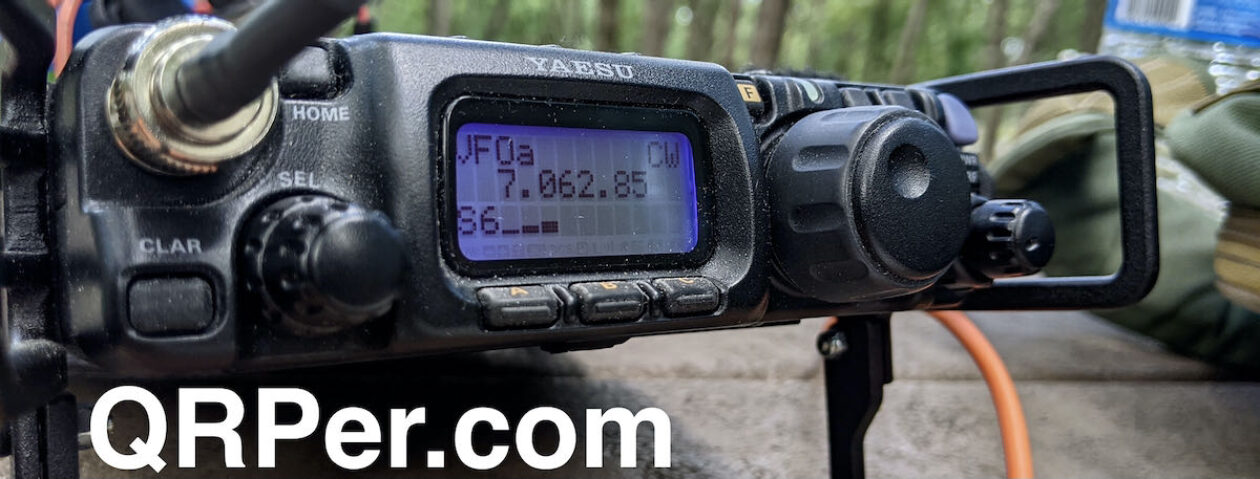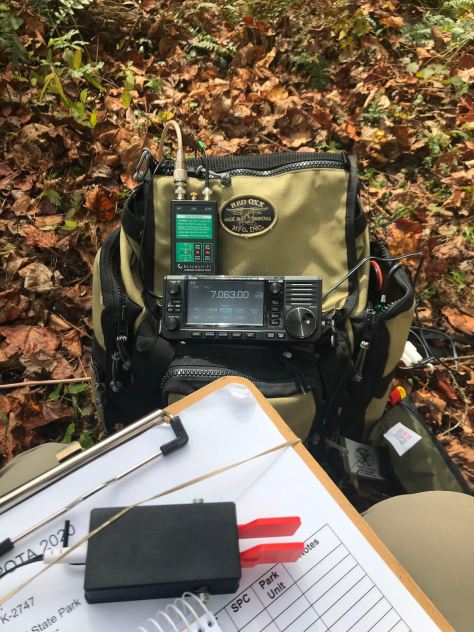 In a previous post, I mentioned that I had regretted selling quite a few radios.
In a previous post, I mentioned that I had regretted selling quite a few radios.
Almost immediately after publishing that post, I purchased an Elecraft KX1. It was an impulse purchase, and I’m happy I made it.
Then, a couple weeks ago, my buddy Don discovered I was considering purchasing the Yaesu FT-818.
He mentioned that he had a very lightly used FT-817ND with a lot of extras he would appreciate selling me. I agreed without hesitation.
The package included:
- Yaesu FT-817ND
- Inrad SSB 2.0 kHz narrow filter
- Massoft Mylar speaker (installed)
- Anderson Powerpole adapter on rear of chassis
- Yaesu PA – 48B Charger
- Portable Zero FT-817 ESCORT bracket and side rails in black
- Portable Zero Sherpa Backpack
- Nifty Mini Manual
- Yaesu FNB 85 1400ma
- All original accessories and antennas
Don offered a fair price for the package, so how could I resist? (Hint: Don’t answer that!)
Besides completely trusting Don as a seller, I must admit that the FT-817 Escort side rails were a big selling point. I’d planned to purchase those regardless. Having owned the original FT-817–what, 20 years ago?–I knew I wanted something to protect this radio in the field. Not only that, but the FT-817 needs a proper bail in my opinion and the Escort delivers!
Blue Ridge National Parkway (K-3378)
 Saturday, I had one goal in mind: split some firewood at my father-in-law’s house. But I had to pass the Blue Ridge Parkway (K-3378) en route, so why not a quick activation too, right–?
Saturday, I had one goal in mind: split some firewood at my father-in-law’s house. But I had to pass the Blue Ridge Parkway (K-3378) en route, so why not a quick activation too, right–?
Gear:
- Yaesu FT-817ND
- Elecraft T1 ATU
- Chameleon CHA MPAS Lite
- Red Oxx C-Ruck
- Bioenno 6 aH LiFePo Battery
- Ham Radio Workbench DC Distribution Panel
Packed the FT-817ND and, since I needed to fit in a quick deployment, the CHA MPAS Lite antenna.
Talk about getting reacquainted with an old friend: I haven’t operated an FT-817 in at least 18 years!
I was on the air perhaps 35 minutes or so. It was a lot of fun and some trial by fire as I quickly sorted out my CW and phone settings live on the air.
I very quickly made contact with my buddy Eric (WD8RIF) in a park to park contact (thanks, Eric!).
 After that, a CW contest started up and I quickly realized how important it will be for me to get a narrow CW filter for the FT-817ND. It was as if 10 stations were sharing the frequency with me. (Any advice on filters would be much appreciated!)
After that, a CW contest started up and I quickly realized how important it will be for me to get a narrow CW filter for the FT-817ND. It was as if 10 stations were sharing the frequency with me. (Any advice on filters would be much appreciated!)
I only managed to collected the 10 contacts needed for a valid activation and, for the first time, relied on my daughters (both licensed) to help snag my 10.
Propagation was poor on Saturday. Since I was in a hurry to get the wood split–and was running behind–I didn’t hang around to work more than 10 stations. Plus, no one “needs” the Blue Ridge Parkway these days since it’s activated so frequently.
 This activation was a brilliant shake-out for the FT-817ND field kit. I created a few to-do items:
This activation was a brilliant shake-out for the FT-817ND field kit. I created a few to-do items:
- Perform some TX audio tests and tweak the mic settings at home–I feel like the mic gain might have been a bit low.
- Sort out the AGC and sidetone settings in CW and decide if I want to run full or semi break-in. Between the relay clicks, AGC recovery and gain settings, I found full break-in a little distracting with the lower sidetone volume I had set Saturday. This can be easily adjusted and then it’ll sound great.
- Dedicate a small external battery pack for the FT-817ND kit. I might purchase another 6aH Bioenno pack especially since it fits in the Sherpa pack side pocket so well.
- I have the accompanying internal battery pack, but have yet determined how much capacity it still has.
I’m so happy the ‘817ND has re-joined my field radio family! I’ve missed this fine little rig!


































